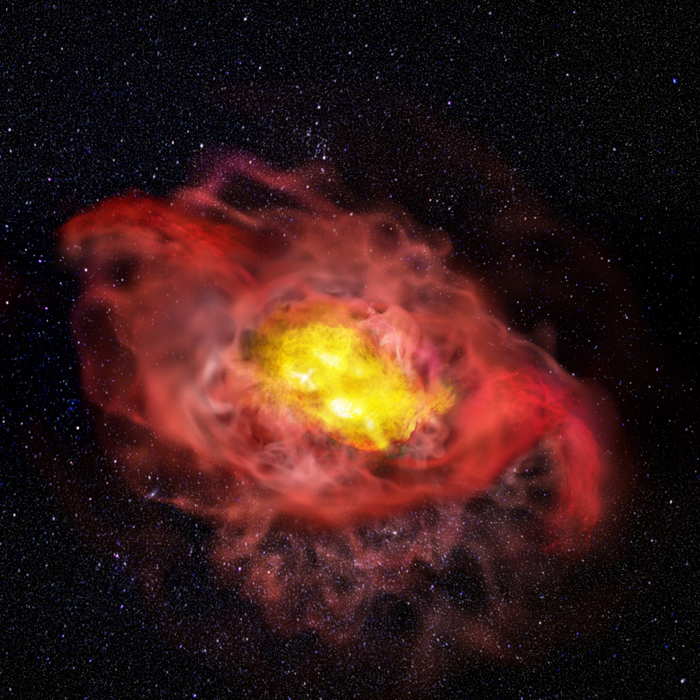Galaxies in the earlier universe could be ‘far bigger than we previously thought’
The finding could change scientists’ understanding of galaxy formation

Your support helps us to tell the story
From reproductive rights to climate change to Big Tech, The Independent is on the ground when the story is developing. Whether it's investigating the financials of Elon Musk's pro-Trump PAC or producing our latest documentary, 'The A Word', which shines a light on the American women fighting for reproductive rights, we know how important it is to parse out the facts from the messaging.
At such a critical moment in US history, we need reporters on the ground. Your donation allows us to keep sending journalists to speak to both sides of the story.
The Independent is trusted by Americans across the entire political spectrum. And unlike many other quality news outlets, we choose not to lock Americans out of our reporting and analysis with paywalls. We believe quality journalism should be available to everyone, paid for by those who can afford it.
Your support makes all the difference.Immature galaxies in the very early universe may be larger than they first appear. That’s one implication of findings presented at the 240th meeting of the American Astronomical Society in Pasadena, California.
Using radio astronomy rather than visible or infrared telescopes, researchers observed significant outflows of hot gas from the centre, and cold gas in the outer regions of the young galaxy A1689-zD1 that could help astronomers better understand how galaxies evolve and become more structured as they mature.
The findings, which will be published in an upcoming edition of The Astrophysical Journal, also show the value of using radio astronomy to study galaxies previously discovered by instruments such as the Hubble Space Telescope.
A1689-zD1 appears as a youthful, star-forming galaxy somewhat less massive than our own Milky Way galaxy, and about 13bn light years away from us in the Virgo constellation. That distance means the A1689-zD1 astronomers observe appears as it existed just 700 million years after the Big Bang, its light having taken billions of years to reach us.
A1689-zD1 was discovered in 2015 using the Hubble Space Telescope and Spitzer Space Telescope, along with a technique known as gravitational lensing, which uses the gravity of a massive cluster of galaxies in the foreground of a telescope’s field of view to bend and magnify the light of a more distant galaxy in the background.
The new research was conducted using the Atacama Large Millimeter/submillimeter Array, ALMA, radio telescope in northern Chile. The observations found A1689-zD1 possessed a halo of cold, carbon gas, and also generated hot outflows of material from its center, something typically associated with supermassive black holes at the centers of some galaxies.
Both the outflows and the halo of cold gas are not typical of such young galaxies, at least as far as existing observations go. But the new observations suggest astronomers may need to change what they consider normal for these early cosmic structures.
“We have seen this type of extended gas halo emission from galaxies that formed later in the Universe, but seeing it in such an early galaxy means that this type of behavior is universal even in the more modest galaxies that formed most of the stars in the early Universe,” Darach Watson, an associate professor at the Niels Bohr Institute at the University of Copenhagen and co-author of the research said in a statement.
“Understanding how these processes occurred in such a young galaxy is critical to understanding how star-formation happens in the early Universe.”
The gas halo seen in the new observations also suggests that early galaxies might be larger than previous optical and infrared observations had suggested, according to Seiji Fujimoto, a postdoctoral researcher at the Niels Bohr Institute.
“The emission from the carbon gas in A1689-zD1 is much more extended than what was observed with Hubble Space Telescope, and this could mean that early galaxies are not as small as they appear,” Dr Fujimoto said in a statement.
“If, in fact, early galaxies are larger than we previously believed this would have a major impact on the theory of galaxy formation and evolution in the early Universe.”
Join our commenting forum
Join thought-provoking conversations, follow other Independent readers and see their replies
Comments